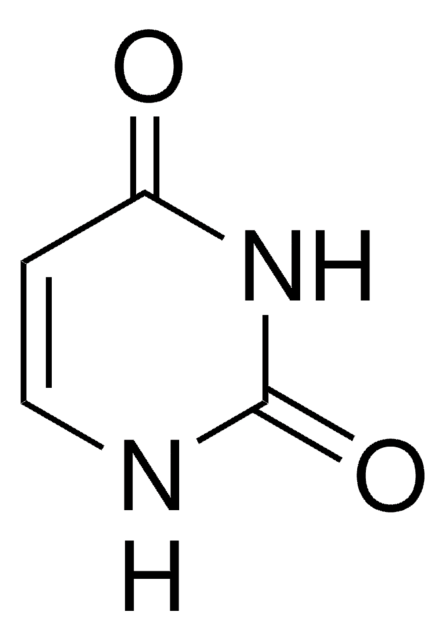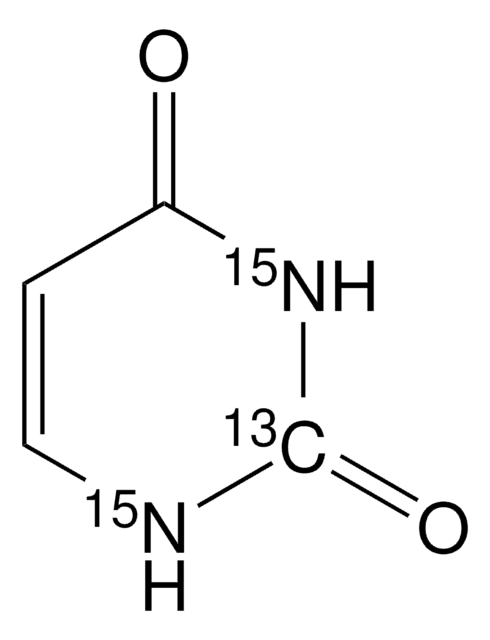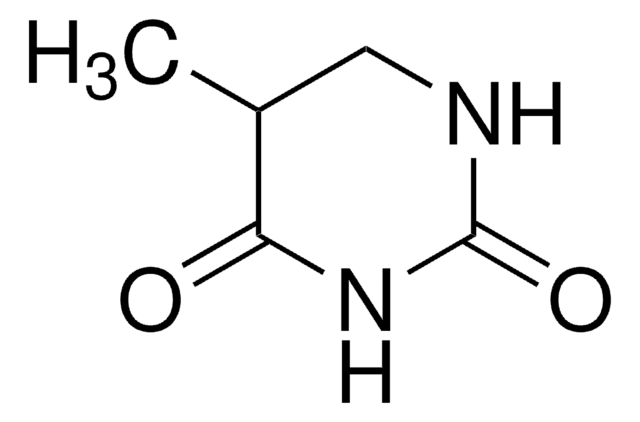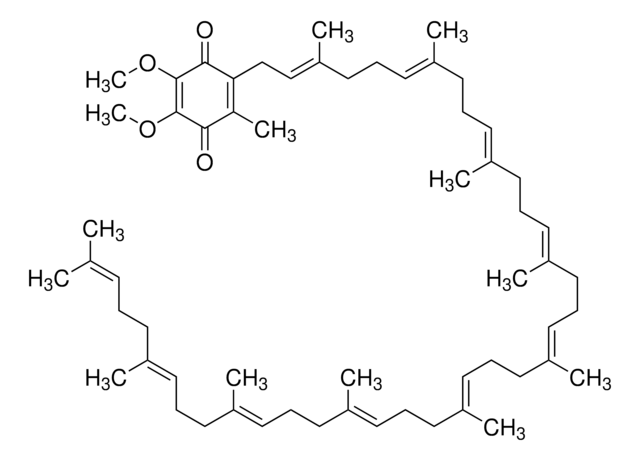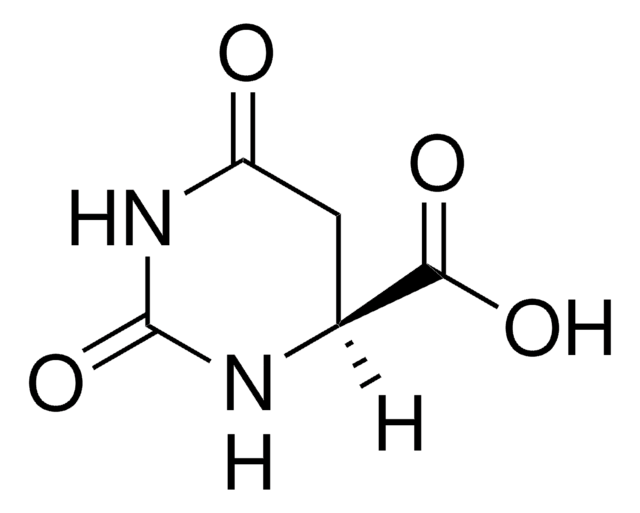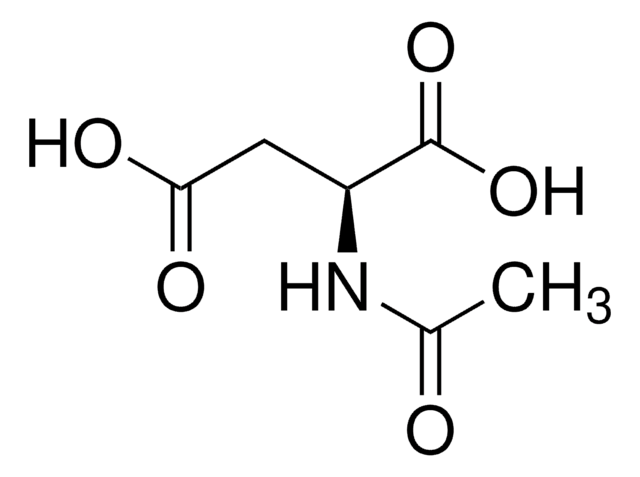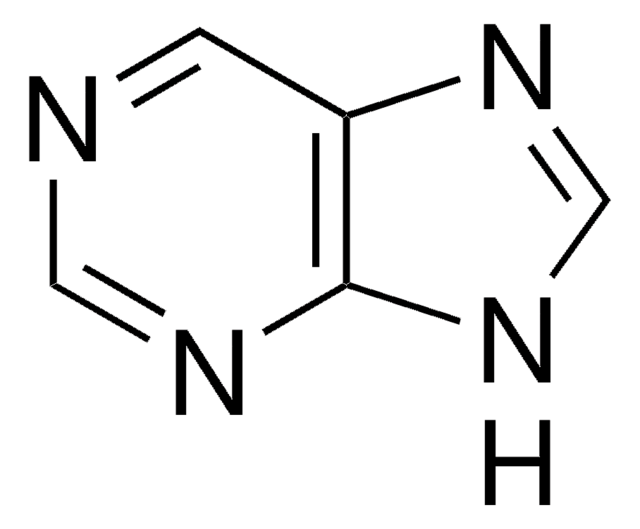D7628
Dihydrouracil
powder
Sinonimo/i:
5,6-Dihydro-2,4-dihydroxypyrimidine
Autenticatiper visualizzare i prezzi riservati alla tua organizzazione & contrattuali
About This Item
Formula empirica (notazione di Hill):
C4H6N2O2
Numero CAS:
Peso molecolare:
114.10
Numero CE:
Numero MDL:
Codice UNSPSC:
12352005
ID PubChem:
NACRES:
NA.21
Prodotti consigliati
Stato
powder
Punto di fusione
279-281 °C (lit.)
Stringa SMILE
O=C1CCNC(=O)N1
InChI
1S/C4H6N2O2/c7-3-1-2-5-4(8)6-3/h1-2H2,(H2,5,6,7,8)
OIVLITBTBDPEFK-UHFFFAOYSA-N
Cerchi prodotti simili? Visita Guida al confronto tra prodotti
Descrizione generale
Dihydrouracil (DiHU) is a minor base found in transfer ribonucleic acid (tRNA). It is similar to uracil with the only exception that the C5-C6 bond is saturated. It crystallized in the monoclinic system with space group P21/C. Its crystalline structure has been analyzed. Its generation from L-cysteine and uracil via photochemical addition has been described.
Applicazioni
Dihydrouracil has been used as a standard for ureido group in the colorimentric assay of transfer ribonucleic acid (tRNA).
Codice della classe di stoccaggio
11 - Combustible Solids
Classe di pericolosità dell'acqua (WGK)
WGK 3
Punto d’infiammabilità (°F)
Not applicable
Punto d’infiammabilità (°C)
Not applicable
Dispositivi di protezione individuale
Eyeshields, Gloves, type N95 (US)
Scegli una delle versioni più recenti:
Possiedi già questo prodotto?
I documenti relativi ai prodotti acquistati recentemente sono disponibili nell’Archivio dei documenti.
I clienti hanno visto anche
Teresa Di Desidero et al.
Investigational new drugs, 36(4), 709-714 (2018-03-01)
The aim of the present study was to assess the pharmacokinetics (PK) of metronomic capecitabine and its metabolites in a population of refractory metastatic colorectal cancer (mCRC) patients. Thirty-four patients (M/F, 22/12) with a diagnosis of mCRC received capecitabine 800 mg
Jihane Basbous et al.
Nucleic acids research, 48(4), 1886-1904 (2019-12-20)
Imbalance in the level of the pyrimidine degradation products dihydrouracil and dihydrothymine is associated with cellular transformation and cancer progression. Dihydropyrimidines are degraded by dihydropyrimidinase (DHP), a zinc metalloenzyme that is upregulated in solid tumors but not in the corresponding
Stereochemistry of nucleic acids and their constituents. VI. The crystal structure and conformation of dihydrouracil: a minor base of transfer-ribonucleic acid.
Rohrer DC and Sundaralingam M.
Acta Crystallographica Section B, Structural Science, 26(5), 546-553 (1970)
Cuiping Liu et al.
Methods in enzymology, 469, 69-93 (2009-01-01)
Transfer RNA (tRNA) molecules mediate translation of the nucleic acid genetic code into the amino acid building blocks of proteins, thus ensuring the survivability of cells. The dynamic properties of tRNA molecules are crucial to their functions in both activity
M Boisdron-Celle et al.
Cancer letters, 249(2), 271-282 (2006-10-27)
5-Fluorouracil (5-FU)-related early toxicity, due to a metabolic deficiency, is rare but is potentially severe and even lethal (0.1%). It is due to dihydropyrimidine dehydrogenase (DPYD) gene polymorphism or some epigenetic factors. The detection of metabolic change could prevent severe
Il team dei nostri ricercatori vanta grande esperienza in tutte le aree della ricerca quali Life Science, scienza dei materiali, sintesi chimica, cromatografia, discipline analitiche, ecc..
Contatta l'Assistenza Tecnica.